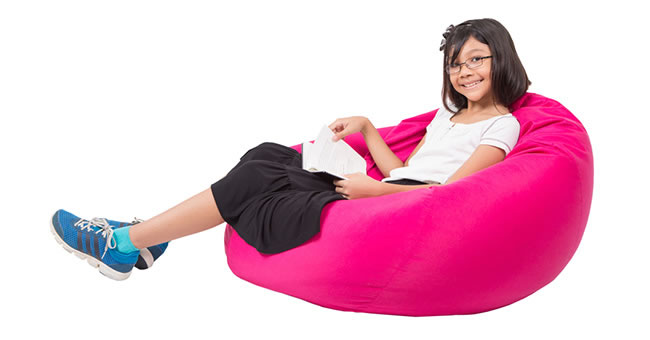
How you set up your classroom reading area will ultimately affect how successful reading time is for your students. To help children become successful readers, your classroom reading area needs to be comfortable enough for children to get absorbed in reading. Whether you're planning on setting up a permanent classroom reading area or you would rather set up a temporary one when needed, there are three essential elements that go into designing an engaging classroom reading area:
-
Soft Furnishings and Comfortable Seating OptionsGive children an opportunity to get away from their desks by providing soft furnishings and comfortable chairs for them to sit or lay on when they read. Children will be more likely to read and understand the text when they are relaxed and comfortable. Loungers, bean bags, pillows, blankets, soft rugs, and video rockers are all great items to include in your classroom reading area. K'Motion Stools are also a good seating option for children who don't like to sit still.
Most of these items are easy to store away in a cabinet or corner of the room if you don't want to create a permanent classroom reading area. You can also give children the option of taking a pillow or bean bag out of the reading area and finding their own comfortable reading nook in the classroom (e.g., under a table, near your desk, or any other spot in the classroom they think would be comfortable) during reading time. Just make sure that you can see all of the students from your desk.
-
A Large Variety of Books and Reading Materials
Think outside of the box when it comes to reading materials–bring in developmentally appropriate graphic novels, comic books, magazines, newspapers, brochures, pamphlets, etc. for children to read. You can also print out online articles for children to read, or you can allow them to read articles and children's eBooks on a tablet or laptop. Another option would be to give children the opportunity to bring something from home to read. Make sure you include a variety of chapter books, leveled readers, and read-along books, but use your classroom reading area to show children that reading goes beyond traditional books and textbooks.
-
Book Storage that Encourages Children to ReadYou probably have one or two bookcases that are stuffed full of books, but that isn't the best way to store books and reading materials if you want children to have easy access to them. Children can't see the covers of books that are crammed in a bookshelf, and they might spend more time looking for a book they want to read instead of actually reading. One way you can address this issue is to put some of the books you have in storage. This allows you to switch out books and keep your selection fresh throughout the school year. After you put some of your books in storage, you can go through and organize your bookshelves by subject, author, or category (fiction or nonfiction). Organizing your bookshelves will help children find a book they want to read faster and will also help them remember where they need to put their book back on the shelf.
Once your bookshelves are better organized, you can start thinking about how you want to display books in your classroom reading area. If you go into the children's section of a library, the librarian has usually selected several books to display on various shelves and counters in the section. Incorporate this idea in your classroom reading area by choosing several books to display each week.
Be sure to browse our selection of children's books and related materials for ideas on items you can include in your classroom reading area.
